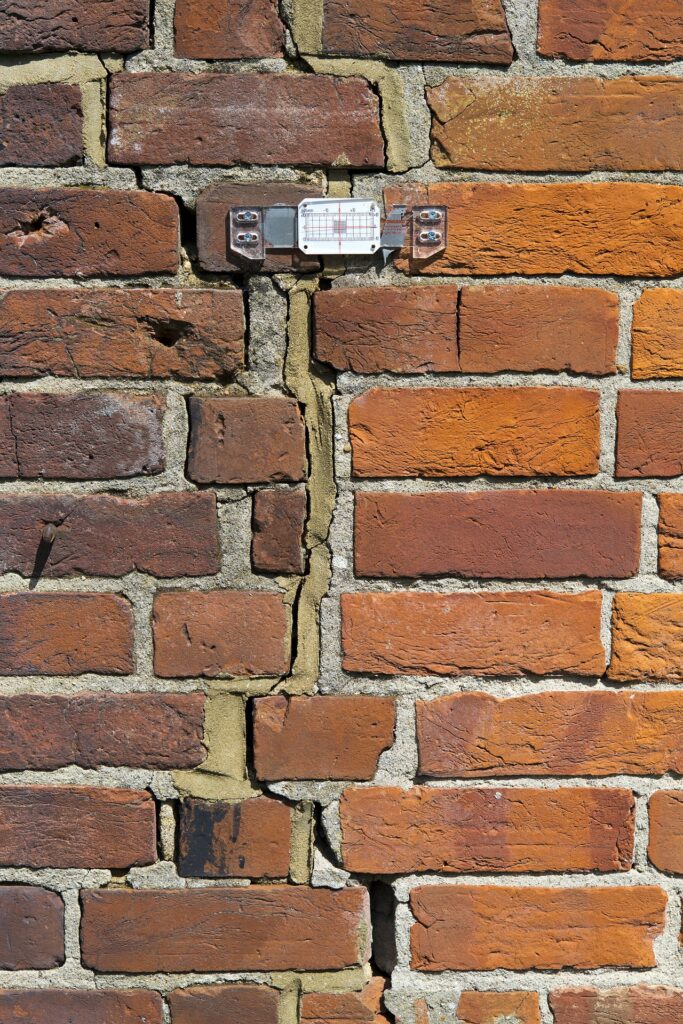Over thirteen yearsexperience in the industry
We can offer aMarket comparison
Accepted bymajority of high street banks
Recognised byUK Finance
Subsidence and How to Spot the Signs
Subsidence – the word most feared by homeowners and home buyers alike! But does it have to be such a horror story and are there ways we can avoid it?
 What is Subsidence?
What is Subsidence?
Subsidence is when the ground beneath a property becomes unstable and sinks. This causes the foundations to move out of alignment and the building to ‘subside’.
The increasing problems of climate change – hotter, drier summers, and wetter winters – is increasing the risk of subsidence and claims are on the rise. Many homeowners are unaware of the signs of subsidence and the steps that can be taken to reduce the risks; and who to contact if you think there is a problem.
Yes heatwaves can contribute to increased subsidence. (Data Source) ABI (Association of British Insurers)
The Signs of Subsidence
One of the most common signs of subsidence will be visible cracking. But unlike normal cracking caused by plaster drying out and settling, the cracks will be wider than 3mm, visible from inside and outside the property, often diagonal and often starting from windows or doors.
Other signs will include windows sticking when opening and closing, floors dropping away from skirting boards, pooling water outside and paving slabs dropping on one side.
How to deal with subsidence?
If the signs are there, it is vital not to ignore them. You should contact either your insurer (assuming your insurance covers subsidence) or a qualified professional surveyor to come and assess the situation and how it can be sorted out. Contrary to popular opinion, underpinning is only needed in the worst cases of subsidence. Often the problem is caused by tree roots or a leaky pipe; so the problem can be remedied relatively quickly and easily using the correct professionals.
Data on Subsidence Claims
In a typical year, 60% of valid subsidence claims will be due to root induced clay shrinkage. 18% will be due to leaking drains / mains water supply pipe. 18% will be due to poor ground, infill and consolidation issues whilst the remaining 4% will be due to other causes such as heave, landslip, sinkholes or mining issues. (Source)
Most At Risk Subsidence Locations
Based on 2022 data from LV, these areas are most at risk from subsidence:
| Ranking | Postcode | Town | Increase from 2021-22 |
|---|---|---|---|
| 1 | SE | London | 171% |
| 2 | BS | Bristol | 238% |
| 3 | B | Birmingham | 40% |
| 4 | N | London | 133% |
| 5 | SO | Southampton | 166% |
| 6 | LE | Leicester | 97% |
| 7 | NG | Nottingham | 50% |
| 8 | RG | Reading | 143% |
| 9 | CM | Chelmsford | 244% |
| 10 | NN | Northampton | 212% |
Table source. Which
The British Geological Survey (BGS) have provided maps of areas with estimated higher subsidence risk in the future.
Full Surveys to Detect Subsidence
When purchasing a property it is always worth getting a full survey, especially in an area prone to subsidence, as this will highlight any issues. Historical subsidence work should come with guarantees; as well as a Certificate of Structural Adequacy if the repairs were part of an insurance claim.
It is also worth considering the insurance implications of a house with subsidence, as often polices can be more expensive and providers limited.
However, there are simple actions you can take to help ensure that subsidence does not become your property nightmare, including:
- Keeping trees and shrubs cut back
- Checking water pipes for leaks and keeping guttering clear of debris
- Ensuring the materials around your property are porous, like gravel or grass, to allow for drainage.
For further information, please contact Ed or Kelly on 01284 365345 or email ed@granitebw.co.uk / kelly@granitebw.co.uk.
Copyright © 2025 Granite Building Warranties
Supported by Fox 360 Ltd
Granite Building Warranties Ltd is an Appointed Representative of Richdale Brokers & Financial Services Ltd which is authorised and regulated by the Financial Conduct Authority.
Granite Building Warranties is a company registered in England and Wales (Company Number 11497543) with its registered office at 1st Floor, 5 Century Court, Tolpits Lane, Watford, WD18 9PX
